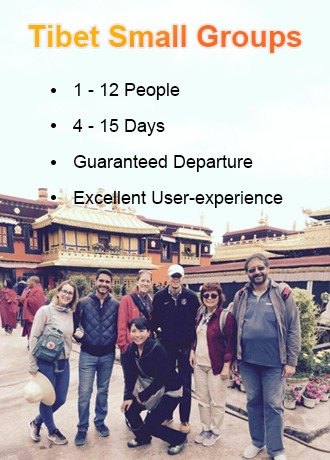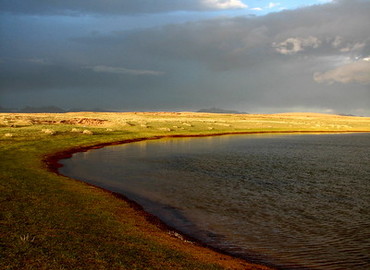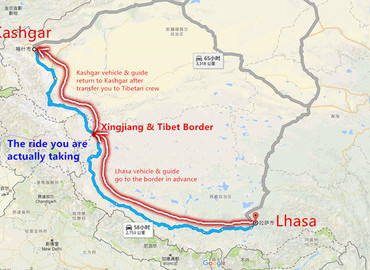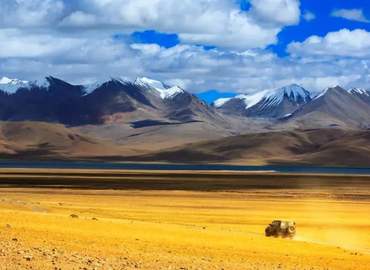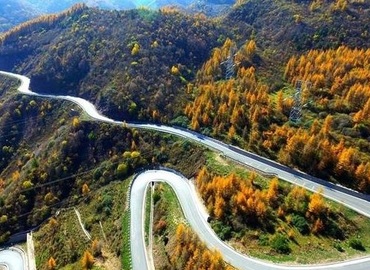Kham
- Catherine
- Last Updated : 05/21/2025
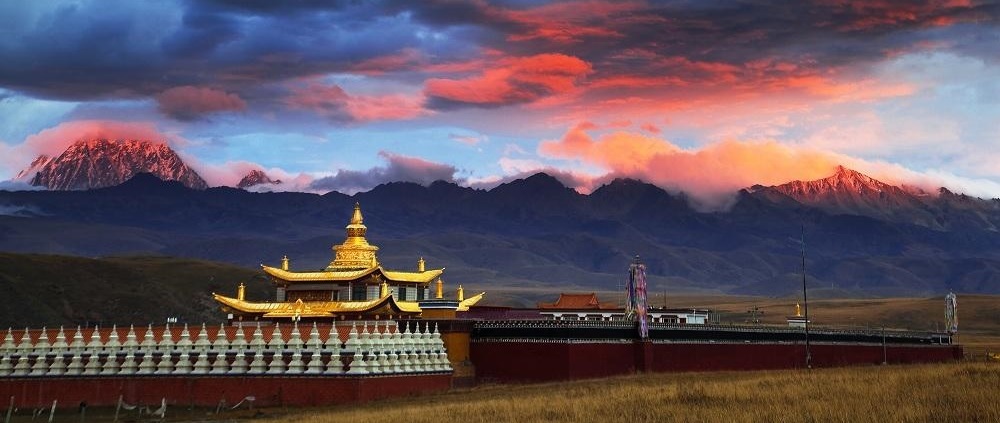
Kham is a region derived from traditional Tibetan culture, and it is often juxtaposed with the Ü‑Tsang region and the Amdo region. Kham district includes parts of Sichuan, Tibet, Yunnan, and Qinghai Provinces. The residents in the Kham region are called Khampa, and they speak the Kham dialect of the Tibetan language. Khampa has lived for generations in the region. The harsh natural environment of high mountains, deep valleys, and rivers has not only shaped the strong and straightforward character of the Khampa but also cultivated their traditions and customs of doing business outside the remote mountains. This article tells about Kham's geography, landscape, Khampa culture, and customs.
Kham Tibetan
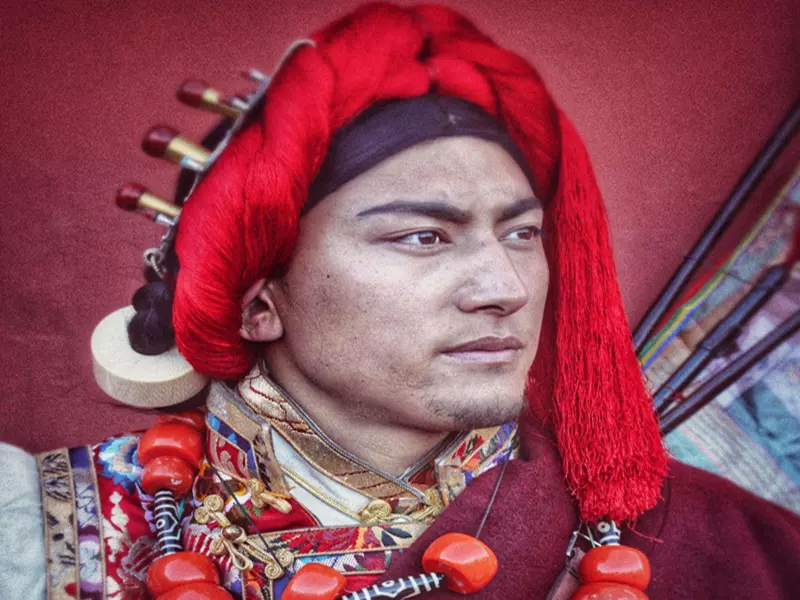
Kham is one of the three Tibetan inhabited areas in China, covering an area of 2.5 million square kilometers and with a Tibetan population of more than 5.4 million. The Kham Tibetan has been formed on the basis of the fusion and assimilation of the Han culture and Tubo culture since the Tang Dynasty. They are basically based on the original local Di, Qiang ethnic elements, supplemented by Han, Mongolian, Naxi, and other ethnic groups. However, due to the fact that Kham is far away from the central area of U-Tsang, and its territory is full of mountains and valleys, the communication between the entire region and U-Tsang area, as well as the communication within the region, is greatly restricted. Therefore, the degree of integration of Tubo culture with Kham is neither thorough nor balanced. As a result, the Kham Tibetan has retained more historical traces. It has distinctive local characteristics:
- There are obvious differences in physical structure between Khampa and the Tibetans in the U-Tibet area. The two are different ethnic types: U-Tibet people, with a short head, a wide face, and a short stature. Khampa type, also known as Tibet warriors, has a long head, a narrow face, and a taller height in stature. Many Khampa men have waist knives, body boxes, and other items, and they tie the "hero spike" with black or red silk threads to their hair, which seems to be just brave.
- Khampa has different groups, such as "Muya", "Bubba", "Yutong", "Choyu", "Zaba", "Pumi", "Namri", "Luru" and so on.
- There are still many language branches in the Kham Tibetans, and some even have multiple languages within a county. Most of the traditional languages in Kham are Tibetan, which can be divided into three dialects: U-Tsang dialect (namely Lhasa dialect), Kham dialect (Dege dialect, Qamduo dialect), and Amdo dialect. The pronunciation of different Tibetan dialects is different, so the dialogue is somewhat difficult. However, because the Tibetan language is spelled in the ancient Tibetan phonic symbol and does not change with the pronunciation of the dialect, the Tibetan language is still written in the same way.
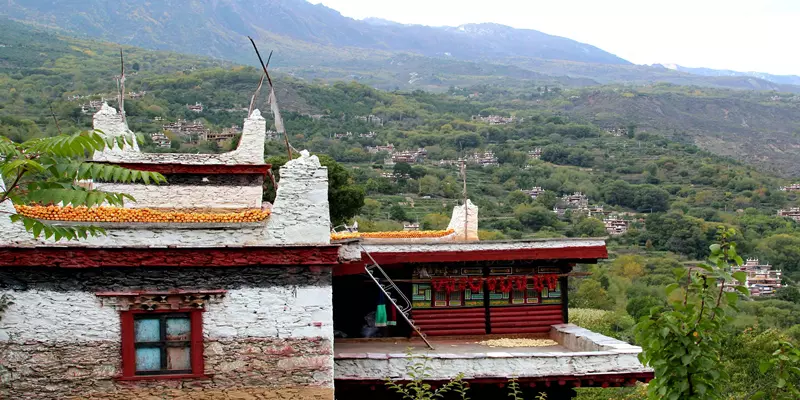
In a word, Khampa is unique and distinctive, which is an important part of Tibetan culture. "religion territory is U-Tsang, horse territory is Amdo, people territory is Kham". In Tibetan folk proverbs, there is a more vivid and straightforward expression: "The best religion comes from U-Tsang, the best people come from Kham, and the best horses come from Amdo." This sentence simply gives the characteristics and essence of Khampa.
Kham of Sichuan Region
Kham Sichuan region is the core area of Kham and the second-largest Tibetan area in China. It is located in the west and northwest of Sichuan Province, including Garzê Tibetan Autonomous Prefecture, Aba Tibetan and Qiang Autonomous Prefecture, and Muli Tibetan Autonomous County. A total of 32 counties, it covers an area of about 249,800 square kilometers.
Ngawa Tibetan (Aba) and Qiang Autonomous Prefecture
The prefecture covers an area of 83,002 square kilometers and has a population of 930,100, with the Tibetan population about 55%. Aba Prefecture has vast grassland and is the main livestock area of Sichuan province. It is rich in natural ecology and tourism resources. It has famous national scenic spots such as Huanglong, Jiuzhaigou, and Siguniangshan. There is also the Wuolong National Nature Reserve, an important conservation base for giant pandas.
- Snow Mountain
Mount Siguniang is a famous snow mountain in the Sichuan Kham district. It is composed of four continuous peaks covered with snow and ice for many years, like four beautiful girls with white gauze on their heads, standing between two galaxies. According to legend, four girls fought bravely against fierce monsters in order to protect their beloved pandas, and finally became mountains, namely Mount Siguniang. It is revered as a sacred mountain by the Sichuan people.
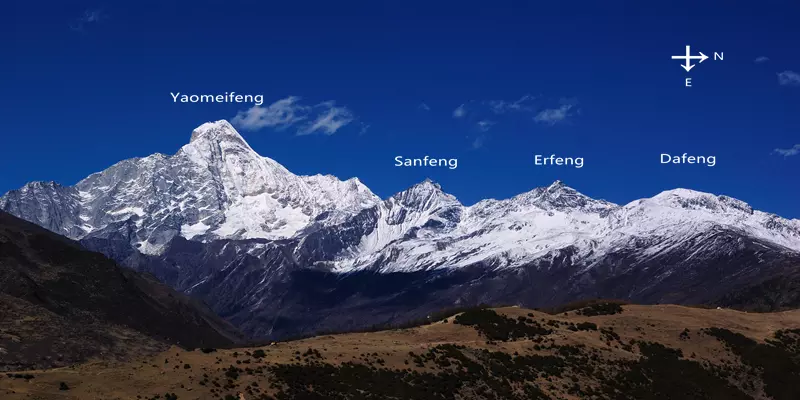
- Tibetan stupa
Countless single Tibetan stupas and groups of Tibetan stupas can be seen throughout Kham, which is one of the features of the Kham area. Building a stupa is an act of accumulating virtues.
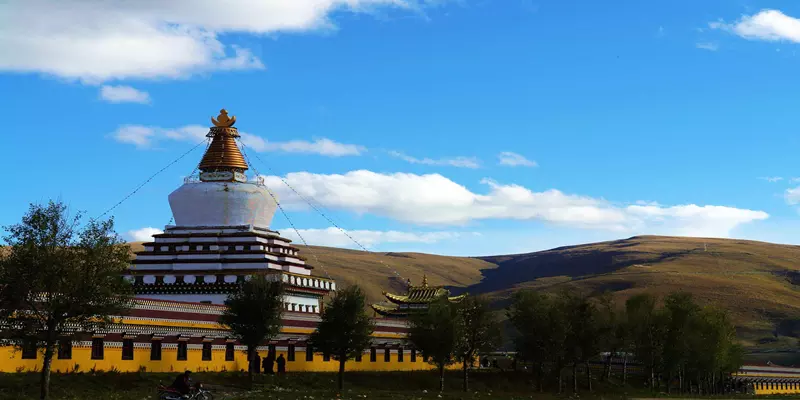
Garzê Tibetan Autonomous Prefecture
Garzê Tibetan Autonomous Prefecture is located in the west of the Kham Sichuan region. It has an area of153,000 square kilometers and a population of 1.199 million. It is the second-largest Tibetan area in China and the core area of Kham. The residents are mainly Tibetans, accounting for 78.4%, and the other 24 ethnic groups are scattered in the whole prefecture. Kangding, the seat of its state capital, is famous at home and abroad for the song "Kangding Love Song" and is known as the hometown of love songs. Tibetans mainly use the Kham dialect (one of the three major dialects of Tibetan). When you come here, you can experience unique folk entertainment activities such as Guozhuang Dance, Xianzi Dance, Pedaling, folk songs, and horse riding and drinking butter tea. There are also Hailuogou Scenic Spot, Kangding Muya Holy Land Tourist Scenic Spot, Luding Bridge Tourist Scenic Spot in Luding County, Jiaju Zangzhai Tourist Scenic Spot in Danba County, and Daocheng Yading Scenic Spot.
- Tibetan Monastery
Chonggu Temple, which is 3880 meters above sea level, is located in Yading Village. It is an old building, isolated from the world. Whenever the sound of scripture chanting and the sound of dharma echo in the silent valley, it makes this place more sacred and mysterious. In 1928, when the American explorer Locke came to Yading for an investigation, he lived in Chonggu Temple for three days. Through the small windows of the temple, Mr. Locke overlooked the peaceful Yading Village under the moon along the canyon—it is said that this is the prototype of the beautiful Blue Moon Valley in Shangri-La described by Hilton.
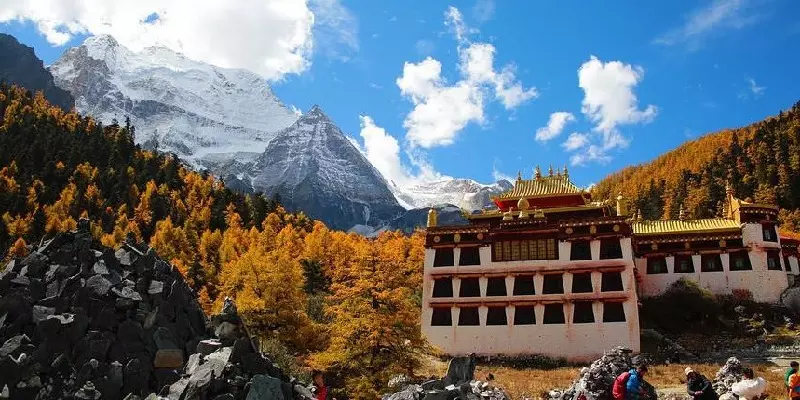
Muli Tibetan Autonomous County
Muli is located on the southwest edge of Sichuan Province, with an area of 13,000 square kilometers. Muli County is one of only two Tibetan autonomous counties in China, with a total population of 130,000. The average altitude of the county is 3100 meters. People there believe in the Gelug Sect of Tibetan Buddhism. The county is characterized by the canyons formed by three rivers flowing from north to south: Shuiluo River, Litang River, and Yalong River that carves out a huge canyon before flowing into the Yangtze River.
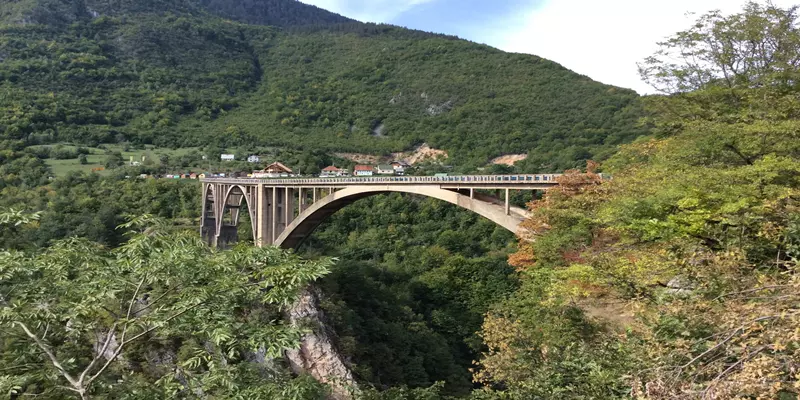
Kham of Tibet Area
Kham of Tibet area is located in the southeast of the Tibet area, including Chamdo City and the east three counties of Nagqu (such as Biru County, Baqen County, Sog County) in the east of Tibet. Tibet Kham Region has an area of 137,000 square kilometers, the Tibetan population is 760,000, accounting for 95%. Qamdo is the birthplace of Kham culture. Due to factors of living area and social interaction, since ancient times, Khampa people in Tibet have earlier accepted the Yellow River culture from Qinghai and Gansu, Bashu culture and Yangtze River culture from Sichuan and Chongqing, and the essence of multi-ethnic cultures from the Bai, Yi, Naxi, Lisu, etc., and integrate it into its own culture. And in the language, clothing, religion, folk customs, residential architecture, folk culture, and other aspects, it has a special performance that is clearly different from other Tibetan regional cultures. Kham women's clothing is more famous for its grace and elegance, and it is equipped with headdresses, chest ornaments, back ornaments, waist ornaments, and other ornaments, which look simple and solemn.
- Rock Worship
Khampa worships stones. In Chamdo, Tibet, Khampa believes that the white stone can guard the family, the fields, and crops on behalf of the gods. The huge white rock that stands tall is the incarnation of the goddess. Mani stones scattered across the mountains and valleys of Tibetan areas and beside the roads of villages are even more prominent manifestations of Tibetan mountain and stone worship and obvious relics.
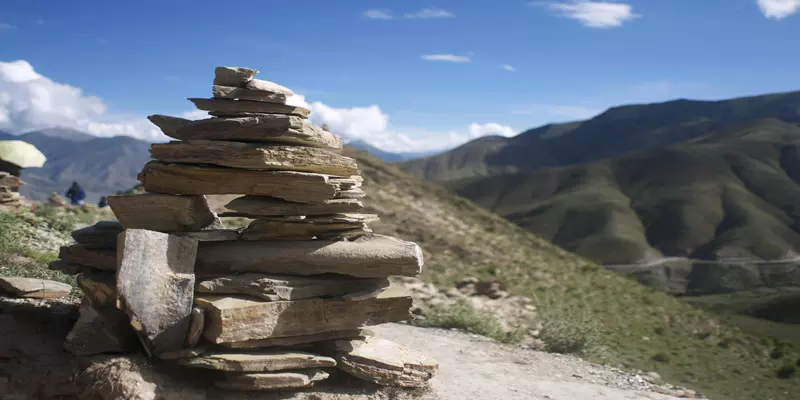
Kham of Qinghai: Yushu Tibetan Autonomous Prefecture
Yushu Tibetan Autonomous Prefecture referred to as Yushu Prefecture for short, is located in the north of the Kham area, the source of the Three Rivers (Yangtze River, Yellow River, Lancang River) in the hinterland of the Qinghai-Tibet Plateau in southwestern Qinghai Province. The total area is 267,000 square kilometers, and the Tibetan population is 365,000, accounting for 97% of the total population. The vast Tibetan area in Qinghai is known as the "Amdo" area, while Yushu has long been closely associated with the western Sichuan region and the Chamdo region in Tibet, known as the "Kham" area. Kham is famous for its graceful, unrestrained, vigorous, and powerful songs and dances, especially the dance of Yushu. It is said there was Yushu's singing and dancing team in the groom’s procession when Princess Wencheng arrived at Qinghai. On the ancient Tangfan road leading to Tibet, there are 192 monasteries centered on Tibetan Buddhism, with a strong religious color, and the famous scenic spot is Princess Wencheng Temple. Yushu's folk customs are uniquely charming. The grand horse racing festival and the Khampa Art Festival will kick off every year in July and August.
- Tibetan Buddhist Prayer Flags
Prayer flags are Buddhist sacred objects, which means good fortune and prosperity and free from disasters. It can be seen in Kham Sichuan everywhere.
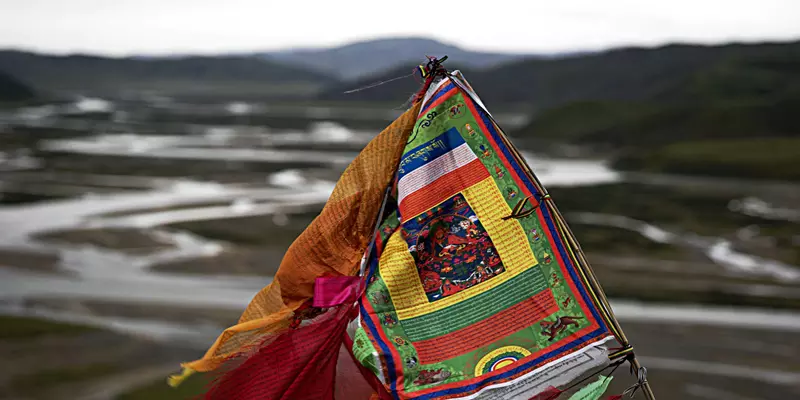
Kham of Yunnan: Diqing Tibetan Autonomous Prefecture (Dêqên)
Kham area of Yunnan is in the northwest of Yunnan Province, at the junction of Yunnan, Tibet, and Sichuan. The total area is 23,870 square kilometers. The Tibetan population is more than 130,000, accounting for 33% of the total population. Diqing, Tibetan means "auspicious place". In history, Diqing was a key thoroughfare of the "tea-horse ancient road" in the southwest, an important material distribution center and trade transfer station in the eastern Tibetan areas, and the throat to enter and leave Tibet. The landform here is unique. There are Meili Snow Mountain, mountain lakes, modern glaciers, beautiful meadows such as Zhongdian. English writer James Hilton depicts Shangri-La of Yunnan in his novel "The Lost Horizon" as an eternally peaceful and tranquil place far away in the mountains of the East.
- Tibetan Monastery
Ganden Sumtseling Monastery is the largest Tibetan Buddhist monastery in the Kham area of Yunnan. It is recognized as the center of the Gelug of Tibetan Buddhism in Sichuan and Yunnan. The temple is a five-story castle-style building and its rich treasures make it an art museum too.
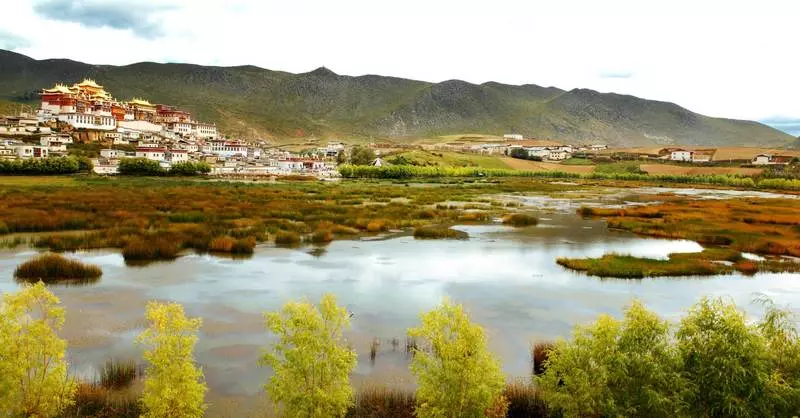
Khampa’s Customs
Diet
In pastoral areas, beef, mutton, dairy products, rice cakes, and flour are the main foods, as well as "Dolma" (commonly known as ginseng fruit).
The northern agricultural areas of Kham are mainly based on highland barley, wheat, peas, etc., and dairy products such as potato, cattle, sheep, and pork.
The southern agricultural area of Kham takes highland barley and wheat as staple foods, corn, wheat, potato, cattle, sheep, and pork, etc.
Corn, buckwheat, soybean, kidney bean, potato, etc. are the main foods in the eastern agricultural area of Kham. The meat is mainly pork and lamb, and there is also abundant wildlife such as deer, deer, deer, green sheep, wild boar, and pheasant. Few people raise chickens, ducks and eggs. Kham people in the Dadu river area eat fish, vegetables, and fruit. The vegetables are turnips, radishes, lotus flowers, etc.
The pastoral area uses ghee and beef and sheep suet oil as the main edible oils and is basically free of vegetable oils. The farming area is dominated by pork fat and pork suet oil, as well as ghee, and a small number of vegetable oils such as walnuts, rapeseed, and peanuts as supplements and adjustments. After the 1940s, edible vegetable oil (rapeseed oil) gradually became popular, and now it has become one of the main edible oils.
Marriage
Most young men and women are in free love. Parents and friends generally do not interfere. The way of courtship is exposed or obscure, which varies from person to place. For example, in Daocheng County, before a Tibetan man and a woman are engaged, they usually have to ask the living Buddha to divine and gossip to see if they are compatible with the Chinese zodiac sign before they can decide on their marriage. After the engagement, they exchanged financial gifts and khatas. During the wedding ceremony, the traditional wedding ceremony was held, and the scene was very lively.
Funeral
There are five burial methods for Tibetans after their death. The form of burial is mainly determined by the economic and social status of the deceased. The most solemn is the tower burial, followed by cremation. Sky burial sustains a fantasy of ascending to "heaven". Sky burial ceremonies are usually held in the early morning. In order to respect the local ethnic customs, the local government has stipulated that people are not allowed to watch the sky burial without permission, let alone take photos without permission. If the child is dead, or someone who has died due to diseases, the body is thrown into the river to feed the fish. This is called a water burial. Those who have done bad things in their lifetime are buried in the earth. Tibetans believe that buried people will never reincarnate. So this is the lowest funeral.
Email response within 0.5~24 hours.


